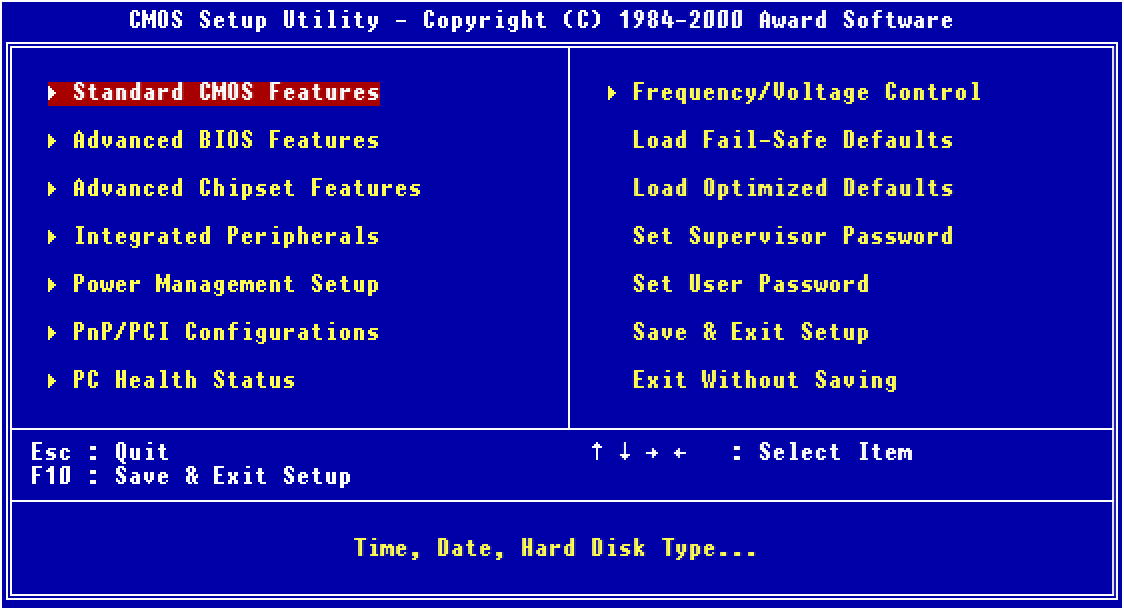BIOS
Stands for "Basic Input/Output System."
A computer's BIOS is a firmware program that controls a computer's boot sequence. It is stored on a ROM chip on the computer's motherboard and provides a user interface for several advanced hardware configuration settings.
The BIOS is loaded automatically when a computer is first powered on. It runs the computer's boot sequence by scanning for installed hardware components, running the POST checks, locating the designated boot disk, then loading the operating system into memory. After the operating system loads, the BIOS serves as an intermediary between the CPU and I/O devices, keeping track of their hardware addresses for the operating system.

You can access the BIOS interface during startup by pressing a designated keyboard key — generally or — during the POST check or while the manufacturer's logo appears on the screen. Once loaded, the BIOS interface shows system information like the CPU type and clock speed, total system RAM, and installed storage devices. It also provides several menus of customizable settings, allowing you to choose which drive serves at the boot disk, change system power settings, and toggle hardware components like onboard audio and network connections on or off.
NOTE: BIOS firmware was standard on PCs throughout the 1980s, 1990s, and 2000s until manufacturers started replacing it with a successor, the Unified Extensible Firmware Interface (UEFI), in the 2010s.
 Test Your Knowledge
Test Your Knowledge